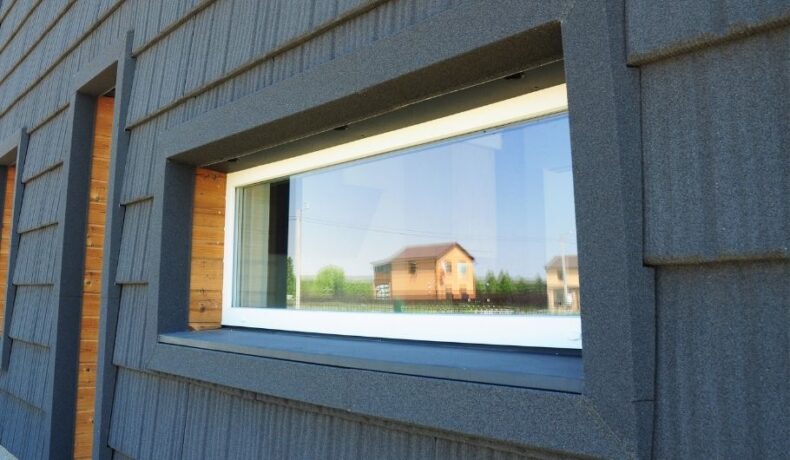According to Passivhaus Trust, there are over 65,000 passive houses worldwide, and this number is continuing to grow. It’s no wonder then that passive house windows are becoming an increasingly talked about topic among green technology lovers.
But what are they and how exactly do they help contribute to energy efficiency and savings in a household?
By the end of this article, you’ll have the answers to those questions as well as other FAQs about passive house windows.
Who knows, you may even be tempted to replace your standard windows at home with your very own triple-glazed, energy-saving passive windows.
Table of Contents
What are Passive House Windows?
In order for you to fully grasp the concept of a passive house window, you need to understand its role.
The windows in a passive house perform two such roles:
- They help to reduce heat loss in and around glass areas.
- They allow for heat gain throughout a home via solar irradiation.
By performing these roles, these windows fall in line with passive house standards.
The International Passive House Association puts it best – The Passive House Standard allows for quality, comfort, and energy efficiency. As such, these houses require little in the way of energy to achieve comfortable, year-round temperatures. Ultimately, this assists in making conventional heating and air conditioning systems obsolete.
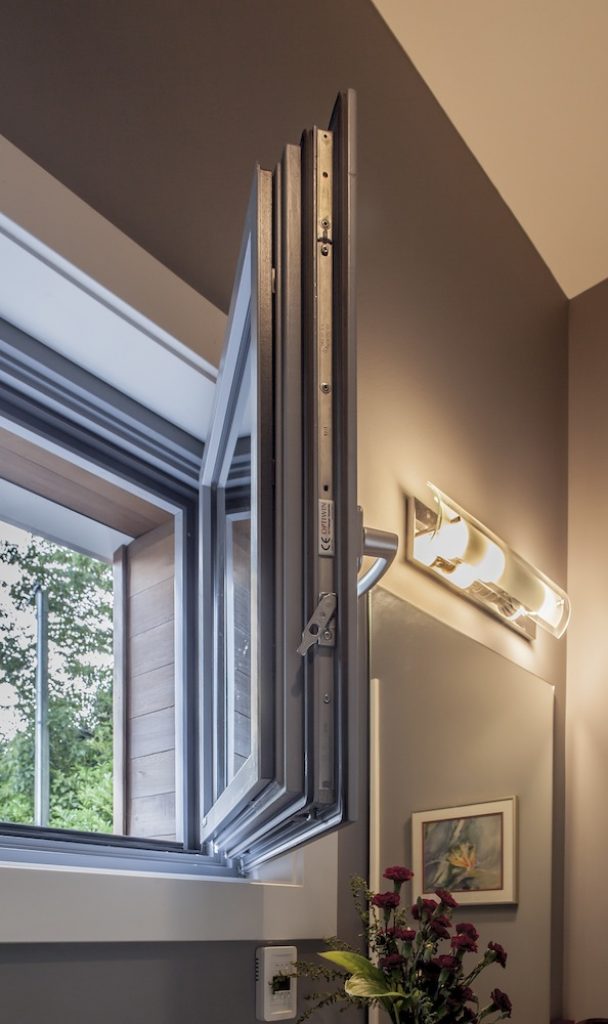
Image source: Passive Green
Characteristics
A passive house window should not be considered a brand or type of window; it relates more to the window’s thermal insulation characteristics.
Right now you’re probably asking yourself, “What are passive house windows, and what types are available on the market?”
First and foremost passive house windows are not a specific brand or type of window – in truth, there is no such thing.
Instead, they are windows that adhere to specific energy efficiency performance standards. As such they are performance-based.
So what constitutes a passive house window?
In general, they have the following characteristics:
- Thermally broken.
- Orientation.
- Airtightness.
- Triple glazed.
- Glass panes filled with argon or krypton gas.
- Low-E glass.
- A low U-value.
- A relative solar heat gain coefficient (SHGC) depending on your needs.
- Installation.
All of the above factors contribute to the window’s thermal insulation characteristics.
How Do Passive House Windows Work?
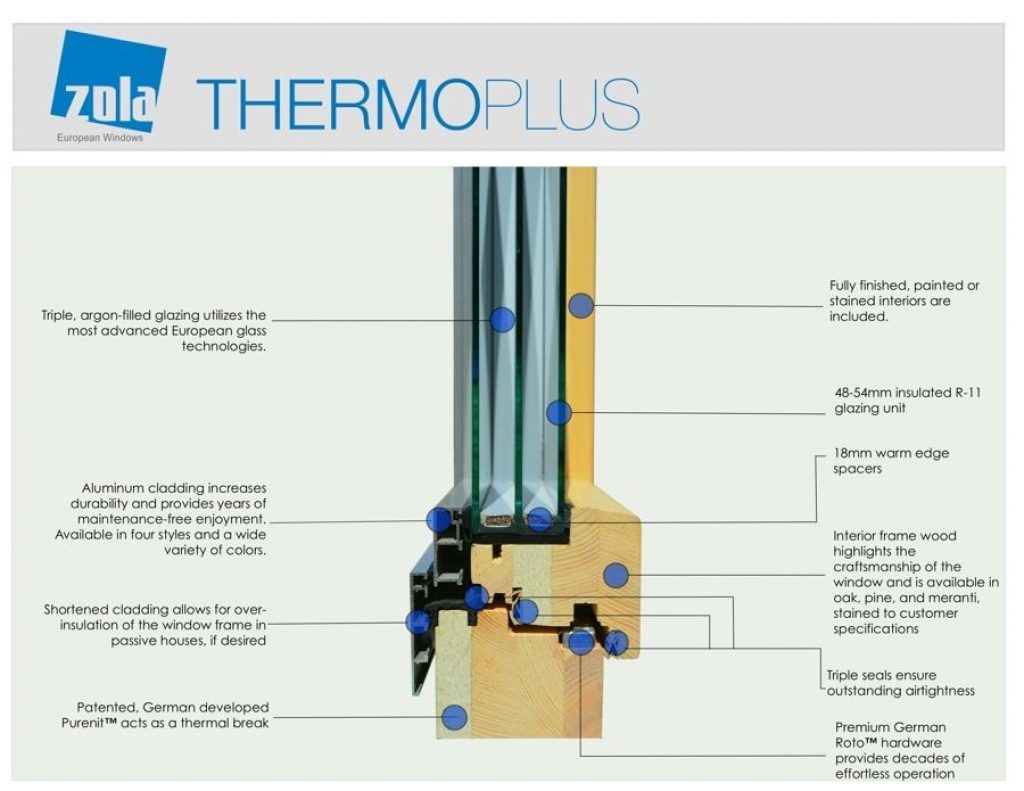
Image source: Zola Windows
Each aspect of a passive house window has a part to play in the energy efficiency of these components.
There are some very special details on the passive house window that are not found on your standard window. Let’s have a closer look at how each of these characteristics helps this window function.
Thermally Broken
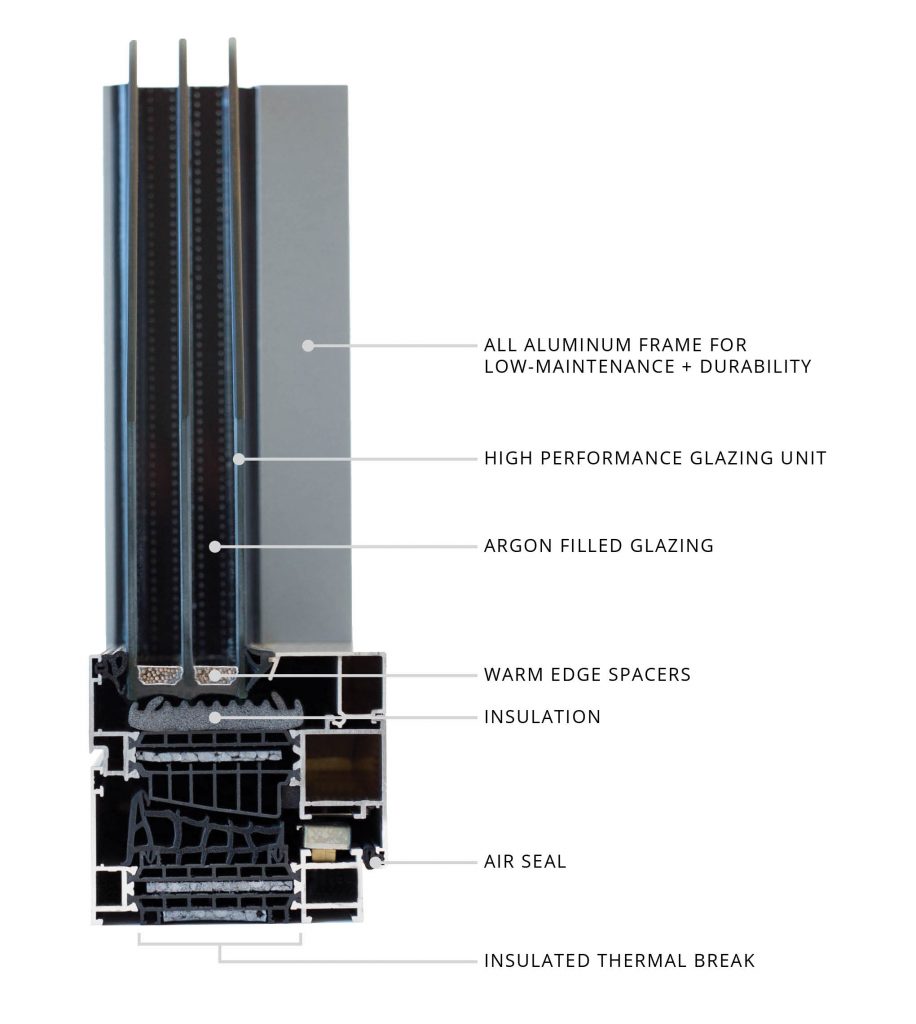
Image source: Glo Windows
House windows require a high degree of insulation for them to be “passive”. This type of insulation is known as a “thermal break”.
This break is a barrier that separates the exterior part of the window from the interior part by means of plastic material or non-metallic resin installed in the window frame.
So what exactly is the function of this thermal break/insulation?
The barrier created by the insulations seals the interior and exterior elements of the window sash. In doing so it creates a form of thermal energy loss resistance.
Why is this important? Simply because it helps to regulate the temperature of the interior space around your window. This means a more comfortable temperature for you and your home.
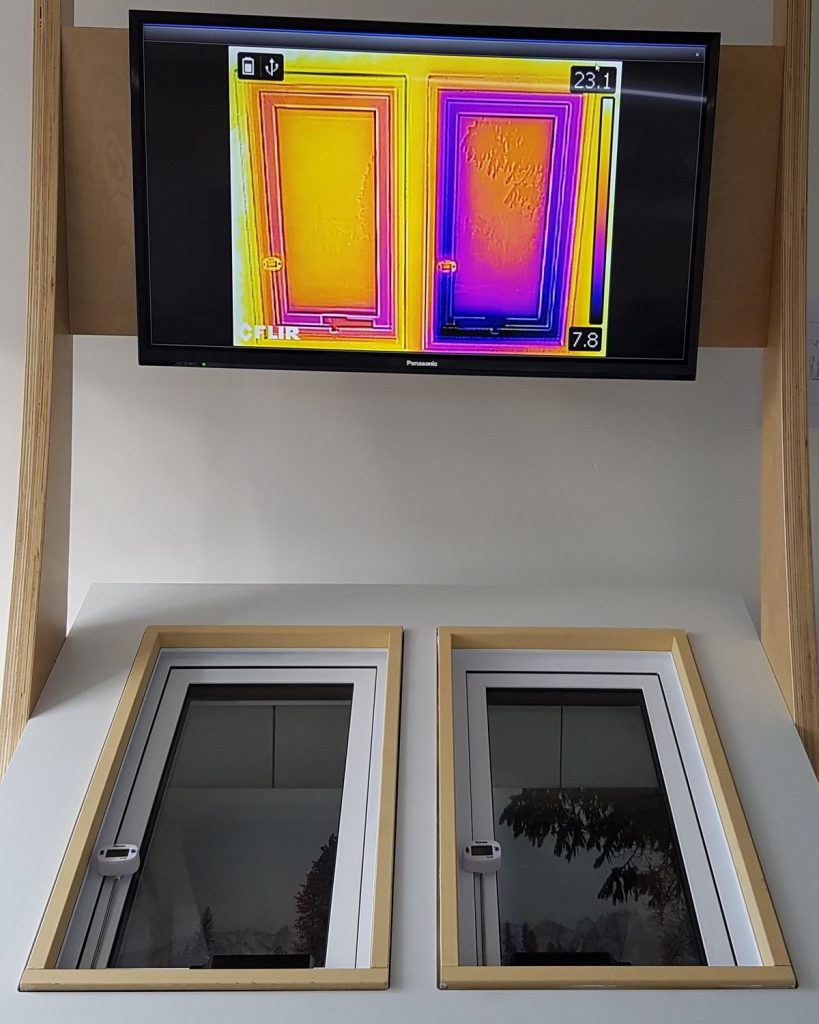
Image source: Vincent Wardill
Orientation
There is no point in having the proper windows in your house if they aren’t positioned correctly. As such, the orientation of a passive house window goes a long way in determining its level of effectiveness.
We know that the sun rises in the east and sets in the west, regardless of whether one lives in the northern or southern hemisphere. Therefore, the side of a building that is being utilized for solar gain requires windows that face south.
Having south-facing windows allows for solar energy to heat up buildings during the wintertime. Conversely, in summer, passive houses make use of shading to keep the building cool.
It is ideal to have the windows within 5 degrees of true south. However, having them within 15 degrees can also prove to be very effective.
Airtightness
There isn’t much to this factor. Gaps, holes, fissures – they can all contribute towards unwanted heat gain or loss.
Because of this, passive house windows emphasize airtightness.
Window frames and glass coatings play a major role in ensuring a high degree of airtightness.
Glazing
Overview
Window glazing can refer to the glass panes making up a window as well as the window glazing compound (in the form of putty) that is used to hold the glass in place. For the purpose of this article, we are referring to the former.
Years ago, most windows were comprised of single glazing. Nowadays, you’ll find that the vast majority of standard windows come with double glazing.
A double glazed window is made up of two panes of glass that are connected by a spacer. The space between each pane of glass is filled with an insulating gas – more on this later.
Purpose
Glazing is used to enhance the energy efficiency of windows. It does this by creating an airtight barrier between the inside and outside of the window.
Passive Window Glazing
As opposed to its standard window cousins, passive windows make use of triple glazing – this type of glazing has become an industry standard. As previously mentioned, the spaces between the three panes are filled with a gas – usually argon or krypton.
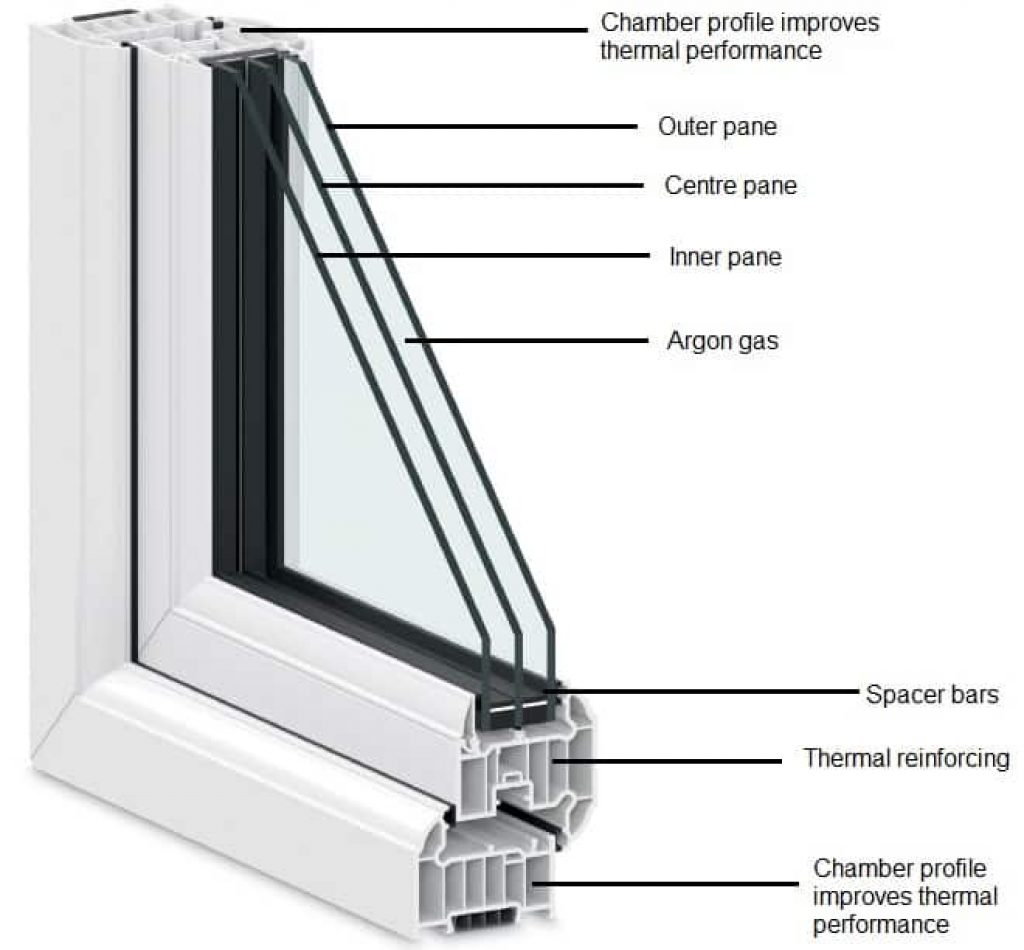
Gas
As previously mentioned, the spaces between the glass panes of a passive house window are filled with gas that increases both insulation and energy efficiency.
If the thought of gas in your home’s windows freaks you out, fear not! These inert gasses are clear, odorless, and most importantly, non-toxic. So no need to panic if you find yourself with a cracked or broken window, you and your family are safe.
Gas Types
The two most common forms of gas used for passive house windows are:
- Argon
- Krypton.
In short, Argon is cheaper and more readily available whereas Krypton is more expensive and provides better insulation.
In practice, you’ll find that many manufacturers utilize a blend of the gases, along with air to balance out the cost/performance ratio.
How These Gases Work
These gases are denser than air and as such, they help improve thermal insulation efficiency.
These gases, in conjunction with Low-E glass coating, bring the temperature of the window closer to room temperature. Additionally, they help to eliminate air currents that occur when differing temperatures meet.
Is Either Gas More Suitable?
Yes, each type of gas performs better depending on the size of the space.
As a rule of thumb, Argon is a more efficient barrier in larger (1/2 inch) gaps between double-pane windows. Krypton is more efficient in tighter (1/4 – 3/8 inch) gaps in triple-pane units.
Low-E Glass
Low-E glass, otherwise known as low-emissivity glass, is an industry-standard component of passive house windows. This type of glass was originally manufactured to provide homes with ample light while minimizing the amount of UV and infrared light coming in.
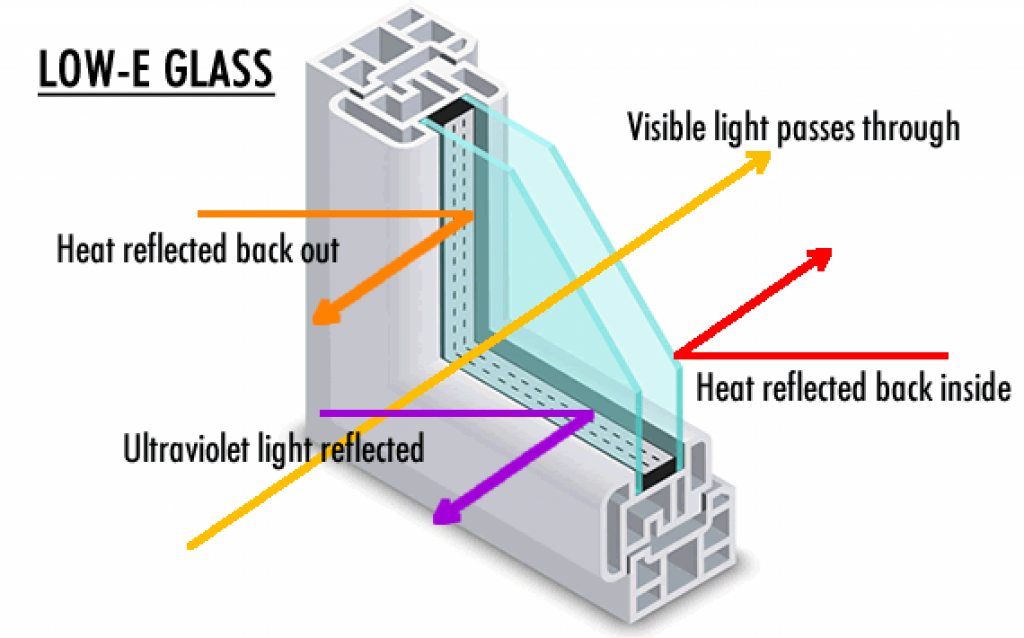
Image source: Bolton Glass Fix
The microscopically thin and transparent coating helps keep the temperature in your home regulated by reflecting internal temperatures back inside. Basically, this glass allows you to soak up the light and warmth from the sun without losing the heat inside your home.
While windows manufactured with Low-E glass do cost more than standard windows, they more than makeup for it by significantly reducing energy loss – think 30% – 50%.
U-Value
The U-value is not a component of a passive house window as such. It is however a vitally important characteristic of one.
According to the U.S Department of Energy, the U-value or factor measures how well a window insulates. In general, the u-value for windows range from 0.20 to 1.20 W/(m²K). The lower the U-value, the better the window will be able to insulate.
Passive Window U-value
Any window which has a U-value of 0.8 W/(m²K) or less is suitable for a passive house.
Solar Heat Gain Coefficient (SHGC)
Overview
The SHGC rating for windows is a measurement of how much radiant heat comes in through a window. Radiant heat is the heat felt from the sun that is absorbed by people or objects and can warm a room.
SHGC is expressed as a number between zero and 1. Values typically range from 0.25 to 0.80.
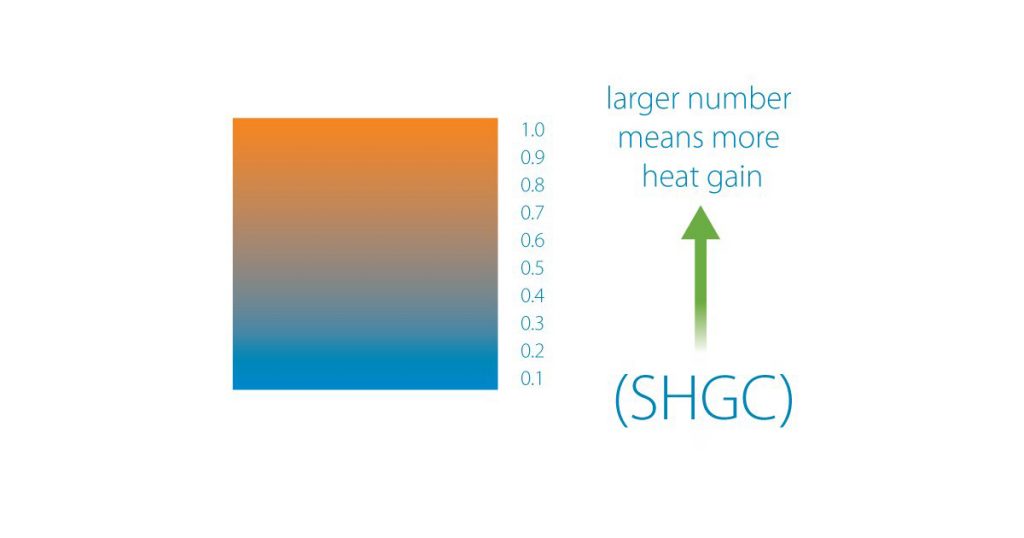
Image source: Bayview Windows
How It Applies
Sometimes a higher rating is better, and sometimes a lower rating is better. Think of it like this:
Imagine it’s a nice sunny, summer day. A lower SHGC number would be like standing under a shady tree as opposed to being directly in the sun. Sometimes, however, standing in direct sunlight may be better, especially if it’s cold outside.
In other words, A window with a high SHGC rating is more effective at retaining solar heat during the winter. Conversely, a window with a low SHGC rating is more effective at reducing cooling loads during the summer by blocking heat gain from the sun.
Factors that affect SHGC include:
- Your home’s climate.
- Your home’s orientation.
- External shading.
- Low-E glass coating
What Type Of Windows Are Used In A Passive House?
Remember, there aren’t actually “types” of passive house windows because the windows are determined by their performance ratings.
With that being said, let’s look at a number of frames that are used for passive house windows
- Composite
- Fiberglass
- Aluminum/metal
- Wood
- Vinyl
Each of these materials has its pros and cons. Let’s have a look at each one.
Composite Frames
These frames consist of composite wood products – think laminated strand lumber. When comparing composite material to standard wood, composite comes out as the clear winner. Why? Because it has better structural and thermal properties.
Additionally, composite material is more resistant to moisture and decay.
Fiberglass Frames
Fiberglass frames are incredibly stable and have air cavities that can be filled with insulation. This gives them an edge in the thermal performance department compared to wood or uninsulated vinyl.
Aluminum or Metal Frames
These frames are very strong, light, and require little in the way of maintenance.
However, there is a big downside to them – they conduct heat very quickly. As such, they aren’t the best material for insulation.
But there is some good news – remember the thermal breaks we discussed earlier? That’s where these components come into play.
Wood Frames
Wooden frames are pretty standard and easy to come by but they do require a fair amount of maintenance. In saying that, aluminum or vinyl cladding can reduce these requirements.
Vinyl Frames
Chances are you’ve heard of polyvinyl chloride (PVC). Well, while PVC is not used for window frames, uPVC is. This material is PVC without the added plasticizers. uPVC is more suited to window frames as it doesn’t decompose and is weather-resistant.
Additionally, the hollow cavities of these vinyl frames can be filled with insulation. This makes them thermally superior to standard vinyl and wood frames.
What Are The Cost Of Passive House Windows?
It’s difficult to provide accurate prices for triple-glazed, passive house windows without carrying out an on-site inspection of a property.
We can, however confidently say you can expect to pay 10% – 15% more when choosing a triple-glazed passive house window as opposed to a standard double-glazed window.
Here are some factors that influence the cost of passive house windows:
- Type of installation.
- Material used.
- Hardware.
- Additional upgrades.
- Brand.
- Model.
What Are The Benefits Of Passive House Windows?
Passive house windows come with a number of very valuable benefits.
These include:
- Optimized Energy Consumption: Passive house windows help to optimize solar energy consumption by regulating your households internal temperature.
- Reduced Health Risks: Standard windows don’t deal with condensation related issues very well. Areas with plenty of condensation build up are at risk of mould, and no one likes mold. Passive windows are fantastic at reducing this risk.
- Cutting Your Monthly Electricity Bill: The ability of passive house windows to regulate your home’s internal temperature means that you’ll be saving on your heating and cooling costs.
Final Thoughts
Passive house windows don’t come cheap, we know this. And sure, they are certainly more expensive than their standard counterparts.
But if you’re looking to reduce your energy consumption, save on your electrical bill, and feel more comfortable in your home, then these passive house components are an absolute must!

